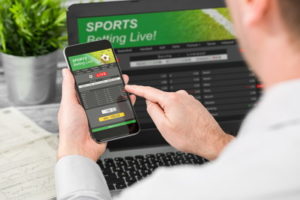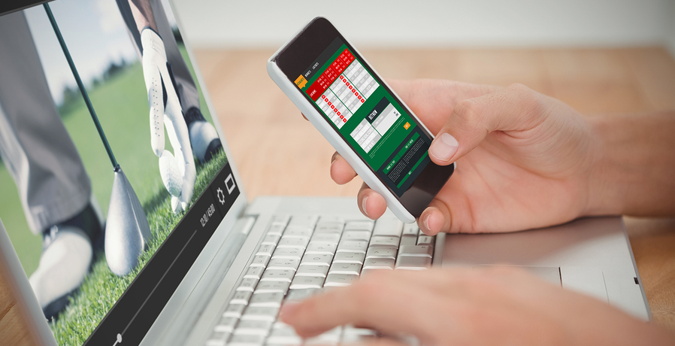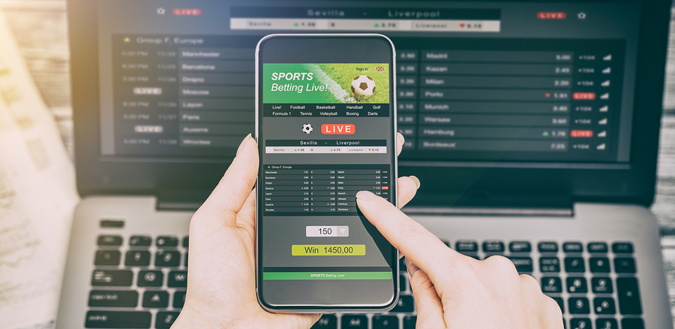The Impact of Live In-Play Markets On Sports Betting
 The gambling industry is changing almost beyond all recognition. Not on the face of it, which remains very much the same as it always has, but in the ‘under-the-hood’ aspects of how people place bets. In days of yore you would simply place your bet, wait for the event you’re betting on to pan out and either collect your winnings or rip up your slip and toss the fragments into the bin. Since the advent and subsequent expansion of online betting, however, the entire way that we think about playing a bet has shifted. It’s not just how we place our wagers that is different, either, with the manner in which bookmakers calculate odds altering thanks to the advancement of computers over the last decade or so.
The gambling industry is changing almost beyond all recognition. Not on the face of it, which remains very much the same as it always has, but in the ‘under-the-hood’ aspects of how people place bets. In days of yore you would simply place your bet, wait for the event you’re betting on to pan out and either collect your winnings or rip up your slip and toss the fragments into the bin. Since the advent and subsequent expansion of online betting, however, the entire way that we think about playing a bet has shifted. It’s not just how we place our wagers that is different, either, with the manner in which bookmakers calculate odds altering thanks to the advancement of computers over the last decade or so.
Nowhere in the industry is that change more noticeable than in the In-Play betting market. Instead of having to place your bets before an event gets started and ruing your misfortune if it’s already underway by the time you’ve made your mind up, now there’s no point at which you’re ‘too late’ to bet on the majority of sports. There are very few disciplines that don’t lend themselves nicely to the world of In-Play betting. Perhaps horse racing is the most obvious example, given that events in that sport are often too short and too frantic to give people a chance to place a bet during the running. This piece is a look at the ways in which In-Play betting has altered how we all think about the bets that we place, with the need to think more tactically now becoming a vital part of how the experience works.
Why Was In-Play Betting Introduced?
When talking about In-Play betting, it’s worth spending a brief moment to consider why it was introduced in the first place. It’s a very specific type of betting, allowing punters to bet on countless markets even though the event that they’re watching might have already started. The answer to ‘why’ it was introduced is probably most simply phrased as ‘because it allowed people to bet more often’. That is, ultimately, the aim of the gambling operators after all – they want punters to spend more money as it increases the chances of the bookmakers making more money.

For as long as sport has been broadcast on television or watched live, people will have enjoyed placing In-Play bets between themselves. Two people on the terraces of a football match might have a bet about which side would win the next corner, for example, or tennis aficionados might have a flutter around the next player to serve an ace. Yet bookmakers themselves simply didn’t have the facilities to offer odds on those sort of situations before computers developed exponentially in recent times. It wasn’t just about people being able to bet more, therefore, but also because bookies were now able to offer the sort of bets that they didn’t have the ability to offer in the past.
Betting Increase Since In-Play Betting Introduction
The advent of In-Play betting was, therefore, an opportunity for bookmakers to persuade people to bet more regularly. Yet did the market reflect this? Part of the problem in discovering the facts of that matter boils down to the lack of complete clarity on when, exactly, In-Play betting was first introduced. We do know that the betting company Bet365 popularised it and took it into the mainstream, but it was actually the Betfair Exchange that very first introduced the tool to the UK market in 2001. Driven initially by Betfair and Bet365 by the mid-2000s Live Betting hit the mainstream.
According to this Deloitte paper, the amount of money bet online on sporting events in 2009 was around £634 million. By 2013 that had gone up to £1,138 million, or a change in the market share of 79.5%. There’s no way of telling how much of that increase was due to people betting In-Play, but it’s a fair assumption to make that it will have had an impact. After all, it would be an almighty coincidence for the amount of money wagered on sports betting to go up so much and it have nothing to do with this new way of placing a bet.
Changing Attitudes Towards How We Bet
 One thing that In-Play betting has allowed is the ability to not worry if your initial bet doesn’t come off. In the old way of placing a bet, if you didn’t win then you were stuffed – until the next event that you wanted to place a bet on came about. Nowadays you can mix up your betting habits to suit your needs. It’s common practice to place an ante-post bet ahead of a sporting event, for example, before then placing another one closer to the time depending on the odds available to you and then placing bets In-Play if the market shifts particularly. It also allows you to lose a bet but not be out of the running, given that you can simply place another In-Play bet as the event unfolds.
One thing that In-Play betting has allowed is the ability to not worry if your initial bet doesn’t come off. In the old way of placing a bet, if you didn’t win then you were stuffed – until the next event that you wanted to place a bet on came about. Nowadays you can mix up your betting habits to suit your needs. It’s common practice to place an ante-post bet ahead of a sporting event, for example, before then placing another one closer to the time depending on the odds available to you and then placing bets In-Play if the market shifts particularly. It also allows you to lose a bet but not be out of the running, given that you can simply place another In-Play bet as the event unfolds.
One of the most obvious sports that Live Betting lends itself to is football. Let’s say that you’ve placed an ante-post bet on Liverpool to draw 0-0 with Manchester United in a Premier League game. Ten minutes in and the Merseyside club are 2-0 up, completely ruining your wager. With In-Play betting you can now bet again. You can look at such markets as ‘Next Goalscorer’, ‘Next Team To Score’ and ‘Final Score’, giving you countless opportunities to make up your loss. Yet this can also be a slippery slope. What happens if your In-Play bet loses, say, or you land one but another one isn’t a winner. You’re now in a situation when you can keep betting to ‘chase’ your losses because there are so many markets available to you.
Is In-Play Betting Better Than Pre-Event?
Those are the downsides to In-Play betting, but there are certainly plenty of upsides. One of the main things that Live Betting allows you to do is react to the event that’s taking place in front of you. You can make a more informed decision if you’re able to look at the facts of the matter rather than your emotions. When you place a bet before an event begins you have no idea who will be playing, if it’s a team sport, or what sort of form the competitors are in. You are placing a bet based on the likes of intuition and form leading up to the event, rather than the reality of the event itself.
In-Play betting allows you to observe how things seem to be panning out and to react accordingly. In the Liverpool – Manchester United example from earlier, you might have seen that both teams have struggled to score goals lately and placed your bet of a 0-0 result based on that. Perhaps even before the game you knew that Liverpool’s star striker had returned but didn’t think he’d be in very good form because he’s out injured for a couple of months. Then, once the match gets underway, you realise that he’s not lost any of his form but Manchester United’s main central defender appears to have picked up an early injury. That is information that those who watch the game dispassionately will be able to take on board and place bets according to the likelihood that they’ll succeed.

One of the problems with In-Play betting is that it isn’t always easy to bet without emotion. If you’re a Manchester United fan, for example, you’ll have seen your team come back from 2-0 down in the past and believe that it’s possible for them to do it again. You’ll also be extremely reluctant to believe that your team will lose to their old rivals. If a betting company offers an In-Play bet for United to win, therefore, you’ll be tempted to take it despite the fact that you’re almost certainly going to be overestimating the probability of a representative complex event actually taking place.
If you’re not sure what we’re talking about here, think about a roulette wheel. Every time the ball is placed on the wheel and it’s spun, all options return to zero. Yet if you walk past a table that has landed on Black ten times in succession then the temptation will always be to place a bet on Red. It doesn’t matter that the facts are against it, the emotion takes over and you bet accordingly. That’s another reason why bookies are happy that punters so regularly opt for In-Play betting, because more often than not the majority bet on emotion rather than fact.
Tactical Betting
The final thing worth mentioning when it comes to Live Betting is the fact that it’s a method that requires users to be tactical with their bets. You’re in a situation where you’ll be able to cover several possible outcomes as the match progresses, meaning that you can bet on a number of them to cover your losses.
It’s also a much more flexible way of placing your wagers, thanks to those numerous options that we mentioned before. The downside to that is that odds are often less favourable than they’d be for ante-post or, at the very least, advanced bets. That’s part of where the tactical side of things comes in, with punters needing to make a decision about whether or not to place bets if they know they’re not getting favourable odds.



